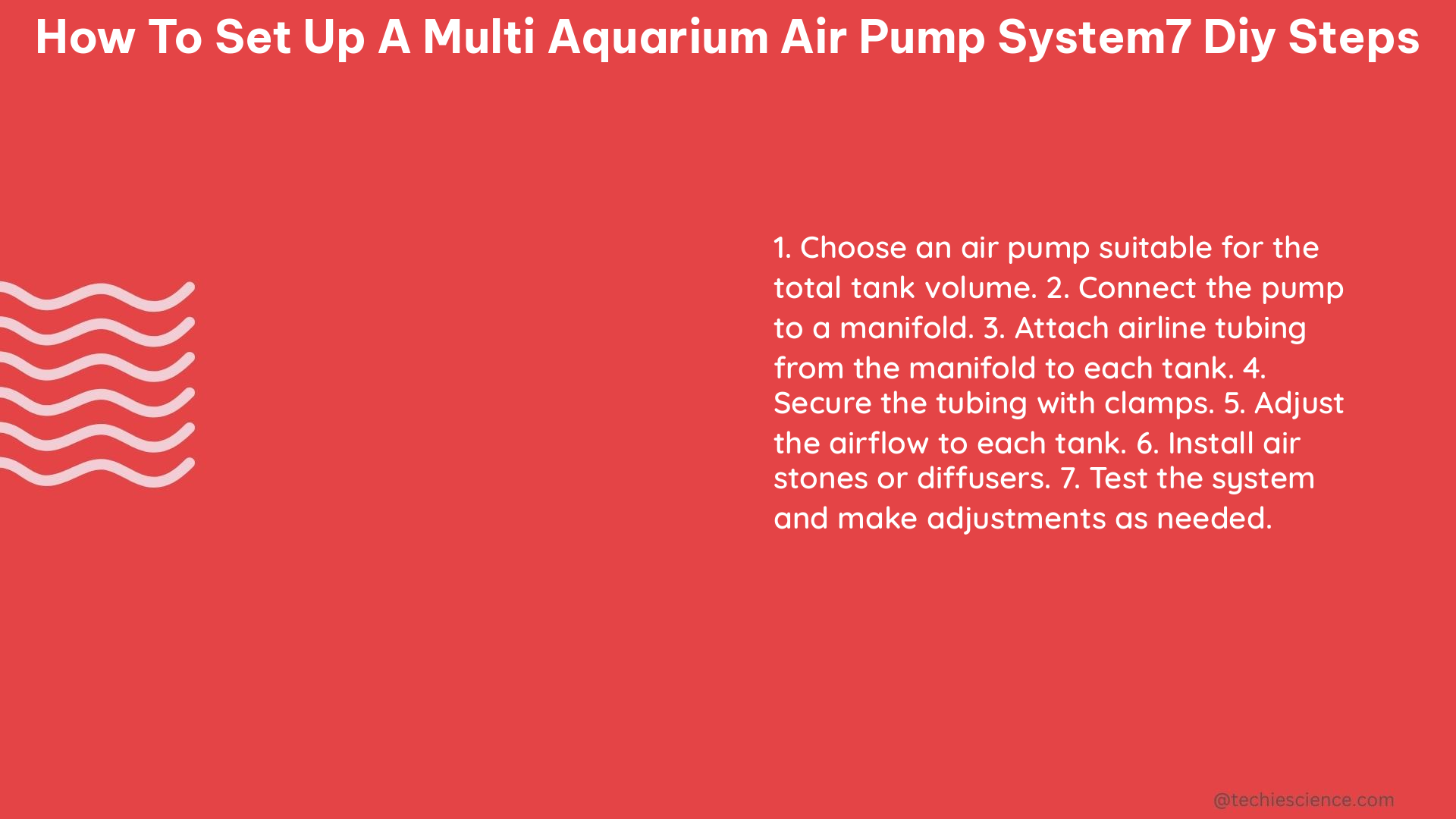Setting up a multi-aquarium air pump system can be a cost-effective and efficient way to provide aeration for multiple fish tanks. This comprehensive guide will walk you through the seven essential DIY steps to establish a reliable and customized air pump system for your aquarium setup.
Determine the Number of Aquariums and Required Air Flow
Before embarking on the setup process, it’s crucial to assess the number of aquariums you need to connect and the specific air flow requirements for each tank. This information will help you select the appropriate air pump and accessories to ensure optimal oxygenation for your aquatic inhabitants.
As a general guideline, a single-outlet air pump can typically handle up to two aquariums, providing around 1.5 liters of air per minute. For larger setups with 2-4 aquariums, a 4-way metal gang valve can accommodate up to 47 liters of air per minute.
Choose the Right Air Pump

Selecting the right air pump is a critical step in setting up your multi-aquarium system. The air pump’s capacity should match the total air flow requirements of your aquariums. Consider factors such as the pump’s outlet count, air flow rate, and power consumption to ensure a seamless and efficient setup.
| Air Pump Specifications | Recommended Aquarium Capacity |
|---|---|
| Single-Outlet Air Pump | Up to 2 aquariums |
| 4-Way Metal Gang Valve | 2-4 aquariums |
| Air Flow Rate | Up to 1.5 liters per minute (single-outlet) |
| Up to 47 liters per minute (4-way gang valve) |
Prepare the PVC Pipe for the DIY Gang Valve
To create a DIY gang valve, you’ll need the following materials:
– PVC pipe (1/2 to 3/4 inch diameter, Schedule 40 thick wall)
– PVC caps
– Ziss plastic air valves
– Painter’s tape or masking tape
– Sharpie marker
– Electric power drill with drill bit set
– Airline tubing
– Check valve
– Single-sided, one-hole pipe straps
– Optional: PVC glue or super glue gel
Start by marking a straight line along the length of the PVC pipe using the painter’s tape or masking tape. This will serve as a guide for drilling the holes for the air valves and airline tubing.
Mark and Drill Holes in the PVC Pipe
Using the sharpie marker, mark the locations where you want to drill the holes for the air valves and airline tubing. It’s recommended to test different drill bit sizes on a small piece of scrap pipe to find the right size that provides a tight friction fit for the air valves.
Drill the holes carefully, ensuring they are evenly spaced and aligned with the marked line on the PVC pipe.
Install the Air Valves and Airline Tubing
Cut the airline tubing at a slant and, if necessary, lubricate it with saliva to ease the installation process. Twist and push the pointed end of the airline tubing into the drilled holes in the PVC pipe until it’s firmly in place and difficult to pull out.
Repeat this process for each hole and air valve, ensuring a secure and airtight connection.
Connect the Air Pump and Check Valve
Connect one end of the airline tubing to the aquarium device, such as an air stone or sponge filter, and place it inside the fish tank. Connect the other end of the airline tubing to the air pump.
If the air pump is positioned higher than the top of the aquarium, you can skip the check valve. However, if the air pump is lower, install a check valve to prevent water from leaking through the airline tubing.
Test the System and Adjust Air Flow
Once the entire system is set up, it’s time to test it and ensure that each aquarium is receiving the required air flow. Adjust the air valves as needed to balance the air flow across the connected tanks.
Remember to monitor the system regularly and make any necessary adjustments to maintain optimal aeration for your aquatic inhabitants.
By following these seven DIY steps, you can create a reliable and cost-effective multi-aquarium air pump system that will keep your fish healthy and thriving.
References:
– Aquarium Co-Op: Air Pump with Multiple Tanks
– Aquarium Co-Op: Aquarium Air Pump
– YouTube: DIY Multi-Aquarium Air Pump System
